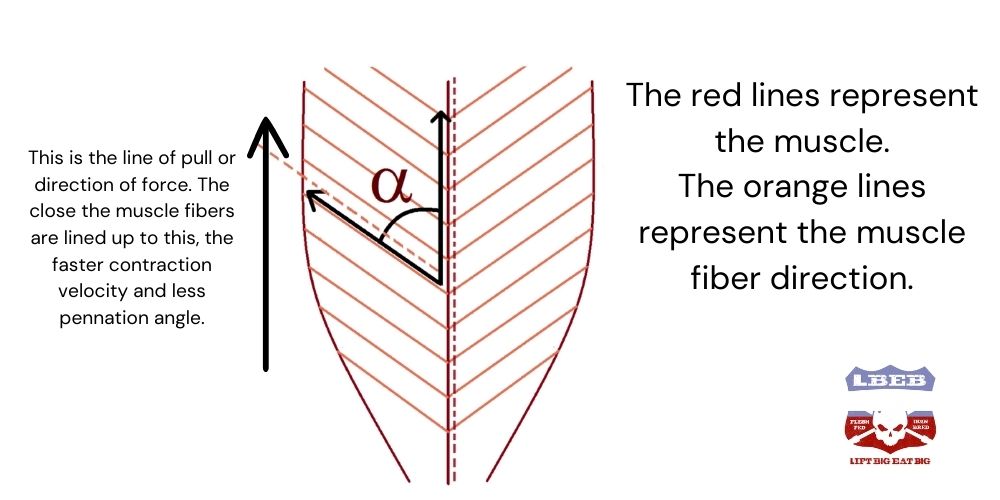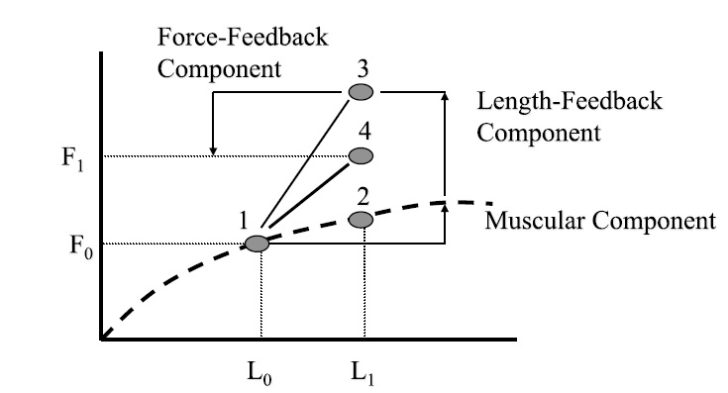Plyometric training is a confusing topic. With various social media videos showing different exercises, gauging whether an exercise is plyometric is challenging to the untrained eye. Is jump rope training plyometric?
Jumping rope is plyometric as it involves a rapid transition from an eccentric (lengthening) contraction to a concentric (shortening) contraction as you bounce off the floor.
Why does it matter if jumping rope is plyometrics, and what benefits do you gain?
Table of Contents
Is Jumping Rope Plyometric?
Jumping rope is a low-load plyometric activity. The reduced intensity comes from the low amplitude (height) of each jump. Plyometrics are characterized by rapid eccentric (lengthening) and concentric (shortening) contractions [1].
The Achilles tendon and calf muscles rapidly stretch and contract each time you hit the floor and then jump. Ground contact times should be under 250 ms to be considered a true plyometric. Jumping rope fits this criterion.
Benefits Of Jumping Rope As A Plyometric Exercise
Increase Tendon Stiffness
Plyometrics involve a rapid transition between eccentric and concentric contractions facilitated by tendon stiffness. A stiffer tendon allows a faster transition [2]. A good analogy is dropping a golf ball and a water balloon onto concrete.
Which one bounces higher? The golf ball represents a stiffer tendon with more spring-like qualities as it doesn’t deform when it hits the pavement. The water balloon deforms, dissipating energy that could be used to create a spring.
Plyometric exercise like jumping rope develops this quality [1].
Decrease Pennation Angle
While meta-analysis shows an increase in pennation angle, the studies included involved non-plyometric exercises and untrained subjects [1]. When competitive athletes perform sprint and jump training, we see a decrease in pennation angle, which is the adaptation we want when jumping rope [3].
But what is pennation angle, and why does it matter?

Pennation angle refers to the orientation of the muscle fibers in relation to the line of pull. The closer aligned muscle fibers are to the line of pull, the greater the rate of force development (i.e., you can produce force faster) [4].
Jumping rope is part of your plyometric training to decrease pennation angle and produce force faster.
Increase Fascicle Length
Think of your muscle fascicle as a group of muscle fibers. These muscle fibers are made of blocks of fiber called sarcomeres. Fascicle length can increase by adding more sarcomeres in series (in a row). Jumping rope as a plyometric activity increases fascicle length in the Achilles and calf complex.
Longer fascicles mean you can produce more force at longer muscle lengths, reducing your risk of injury [5]. Further, longer fascicle length increases contraction velocity, allowing you to produce force faster.
Increase Vertical Jump & Sprint Performance
While the above jump rope plyometric benefits are muscle architecture changes, we see them translate to performance benefits. Jumping rope as a fast stretch shorten cycle plyometric enhances jump performance [7][8].
And that’s any type of jump, whether slow or fast ground contact. Regarding sprinting, we see an average reduction of 0.081 seconds from 10 – 100 m sprints and this is the strongest practically significant finding to date [12].
Increase Lower Body Strength
Meta-analysis shows plyometric training, like jumping rope, in conjunction with jump training, increases strength by over 20 kg [6]. Increases in 1RM squat, leg press, isometric, and isokinetic peak force are seen regardless of the type of plyometrics used.
Neural adaptations to increase the horsepower from the brain to the muscle fibers is one mechanism, but the graph below illustrates it well.

The length-feedback component is the muscle spindle, which lies within the muscle and is sensitive to the rate of stretch. It becomes more sensitive with plyometric training like jumping rope, allowing you to produce more force during movement.
Improve Running Economy
If you’re a runner, this is music to your ears. Running economy is what sets the best runners apart. Plyometrics, like jumping rope, is a tool to improve running economy [9].
An excellent paper had runners replace their warm-ups with jumping rope for 10 weeks and were able to improve their 3 km time trial performance [10].
When combined with resistance training, it’s an even more potent stimulus and a must for runners to improve their performance [11].
Reduce Muscle Slack & Increase Pre-Tension
The muscle slack theory was brought forward by controversial sports scientists Bas van Hooren and Frans Bosch [13]. It represents the muscle going from relaxed to tense. Their analogy makes it easy to understand how it can apply to performance.
Imagine you’re tying a rope from your back car bumper broken down car’s front bumper so you can tow it. Initially, the rope will be slack and hanging on the ground. This would represent the relaxed muscle state.
For the broken car to begin moving, the slack must be removed from the rope so it is taught. If we bring this analogy back to the body, there must be muscular tension for our body to move.
Hence, when landing on the ground when jumping rope, we must be pre-tensed to rapidly get on and off the floor.
Otherwise, the rope hits our feet. If we are too relaxed, the slack is present; therefore, no movement happens until the slack is taken. Plyometrics hone this ability of pre-tension, which is vital to activities like running.
Improve Fitness
While speed, strength, power, and muscle architecture are important to some, cardiovascular fitness is important to others. Jumping rope is a low-cost, minimal-space cardio exercise you can do practically anywhere.
It turns into a full-body exercise as you swing the rope with your hands and arms while jumping rapidly off the floor. You can turn the heat up by using a weighted jump rope that Muay Thai fighters use.
How To Make Jumping Rope More Intense
There are several ways to make jumping rope a more intense plyometric. One is to bounce higher. You can do this by performing the double under, meaning the jump rope completes two full passes under your feet before you touch the ground again.
You can also jump rope on one leg to develop single-leg plyometric ability. It doesn’t need to be boring. You can do combinations of double and single-leg jumps, such as various boxer skips.
Summary
Jumping rope is a plyometric activity and an excellent way to introduce yourself to explosive-style training. Start with doing a set number of ground contacts each set and progress to jumping rope for time.
References
- Ramírez-delaCruz, M., Bravo-Sánchez, A., Esteban-García, P., Jiménez, F., & Abián-Vicén, J. (2022). Effects of plyometric training on lower body muscle architecture, tendon structure, stiffness and physical performance: a systematic review and meta-analysis. Sports medicine-open, 8(1), 1-29.
- Kalkhoven, J. T., & Watsford, M. L. (2018). The relationship between mechanical stiffness and athletic performance markers in sub-elite footballers. Journal of Sports Sciences, 36(9), 1022-1029.
- Blazevich, A. J., Gill, N. D., Bronks, R., & Newton, R. U. (2003). Training-specific muscle architecture adaptation after 5-wk training in athletes. Medicine & Science in Sports & Exercise, 35(12), 2013-2022.
- Earp, J. E., Kraemer, W. J., Cormie, P., Volek, J. S., Maresh, C. M., Joseph, M., & Newton, R. U. (2011). Influence of muscle–tendon unit structure on rate of force development during the squat, countermovement, and drop jumps. The Journal of Strength & Conditioning Research, 25(2), 340-347.
- Brughelli, M., & Cronin, J. (2007). Altering the length-tension relationship with eccentric exercise: implications for performance and injury. Sports Medicine, 37, 807-826.
- De Villarreal, E. S. S., Requena, B., & Newton, R. U. (2010). Does plyometric training improve strength performance? A meta-analysis. Journal of science and medicine in sport, 13(5), 513-522.
- Sole, S., Ramírez-Campillo, R., Andrade, D. C., & Sanchez-Sanchez, J. (2021). Plyometric jump training effects on the physical fitness of individual-sport athletes: A systematic review with meta-analysis. PeerJ, 9, e11004.
- Ramirez-Campillo, R., Andrade, D. C., Nikolaidis, P. T., Moran, J., Clemente, F. M., Chaabene, H., & Comfort, P. (2020). Effects of plyometric jump training on vertical jump height of volleyball players: a systematic review with meta-analysis of randomized-controlled trial. Journal of sports science & medicine, 19(3), 489.
- Eihara, Y., Takao, K., Sugiyama, T., Maeo, S., Terada, M., Kanehisa, H., & Isaka, T. (2022). Heavy resistance training versus plyometric training for improving running economy and running time trial performance: a systematic review and meta-analysis. Sports Medicine-Open, 8(1), 138.
- García-Pinillos, F., Lago-Fuentes, C., Latorre-Román, P. A., Pantoja-Vallejo, A., & Ramirez-Campillo, R. (2020). Jump-rope training: Improved 3-km time-trial performance in endurance runners via enhanced lower-limb reactivity and foot-arch stiffness. International journal of sports physiology and performance, 15(7), 927-933.
- Denadai, B. S., de Aguiar, R. A., de Lima, L. C. R., Greco, C. C., & Caputo, F. (2017). Explosive training and heavy weight training are effective for improving running economy in endurance athletes: a systematic review and meta-analysis. Sports medicine, 47, 545-554.
- de Villarreal, E. S., Requena, B., & Cronin, J. B. (2012). The effects of plyometric training on sprint performance: A meta-analysis. The Journal of Strength & Conditioning Research, 26(2), 575-584.
- Van Hooren, B., & Bosch, F. (2016). Influence of muscle slack on high-intensity sport performance: A review. Strength and Conditioning Journal, 38(5), 75-87.
